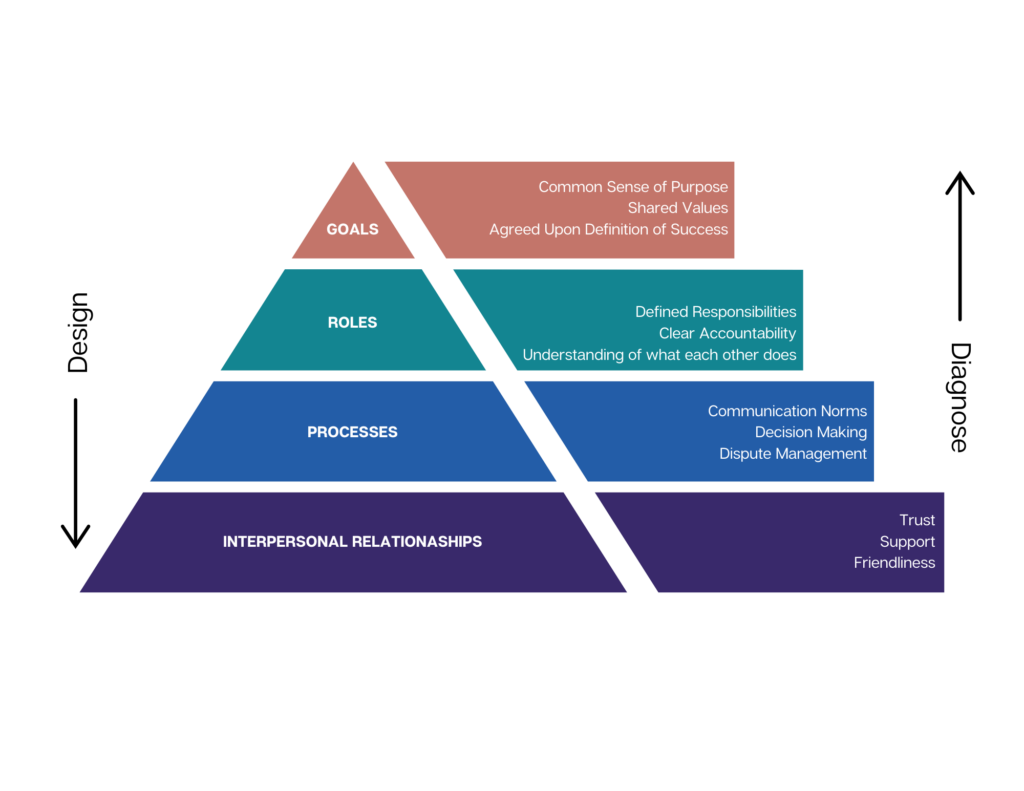I spend a great deal of time coaching leaders on conflict resolution. Whether it’s a leadership team negotiating strategic priorities or a front line team vying for overtime opportunities, it is critical that leaders and manager develop conflict resolution skills.
One of my favorite frameworks for conflict resolution is the GRPI Model first introduced by Richard Beckhard. GRPI stands for:
- Goals
- Roles
- Processes
- Interpersonal Relationships

This model is a reliable tool for both designing strong teams and diagnosing team troubles. It helps us get to conflict resolution quickly when problems arise. Let’s take a closer look.
Goals
When team members are misaligned on goals, tensions can rise. If one member believes speed is the goal and another member believes quality is the goal, then the whole team will feel the misalignment as attention to quality slows the work down and prioritizing speed results in cutting corners. Neither priority is bad or wrong. The team just needs to be in agreement so that the work goes smoothly.
Roles
Having clear roles and responsibilities reduces confusion, increases accountability and helps each member take responsibility for their own part. A lack of clarity around roles can create gaps and overlaps that get in the way of team success.
Processes
Agreeing ahead of time on what technology to use, how decisions are made, and what to do in the case of disagreements is an excellent way to ensure team success.
Interpersonal Relationships
When people know each other better, they are more likely to give one another the benefit of the doubt. When we understand where someone is coming from, how they approach problem solving or what their sense of humor is, it’s easier to engage on more complex work together.
4 Questions for Conflict Resolution
If your team is in need of conflict resolution, here are 4 questions you can ask that draw from the GRPI Model:
- How are we each defining the goal of this team/project?
- Who is responsible for what?
- What processes are we using and how are they working for us?
- Where can we fit some team building work in to improve our relationships with one another?
More Support
I hope you find the GRPI Model helpful. Of course, your situation is going to be unique so you can get more support for conflict resolution and many other management training topics when you join the Uncommon Community. Our community is a collaborative environment where you get instant access to a FREE mini-course, monthly live group coaching, weekly tips and inspiration, and more. Join today!
As always,
Be Uncommon.

